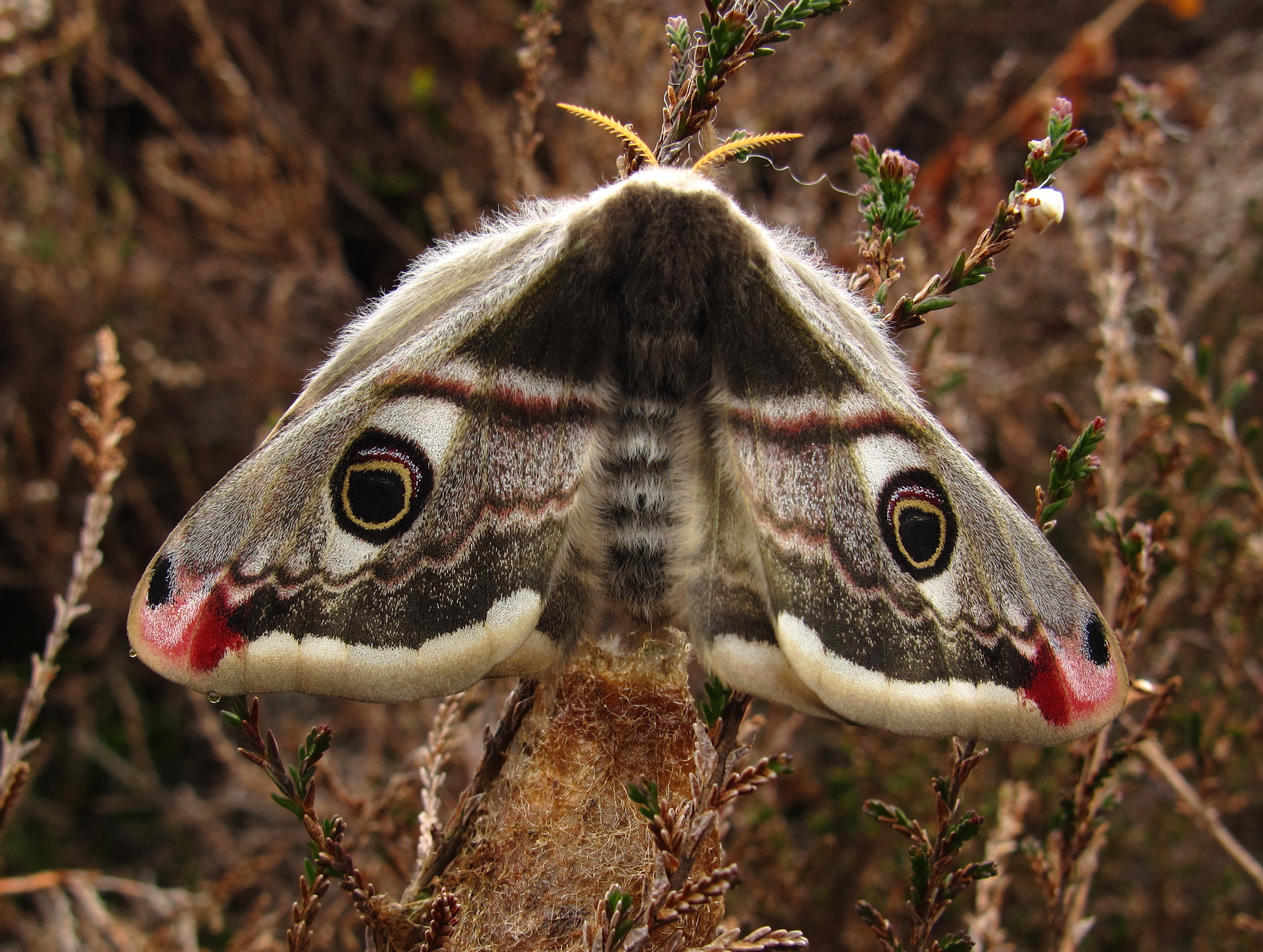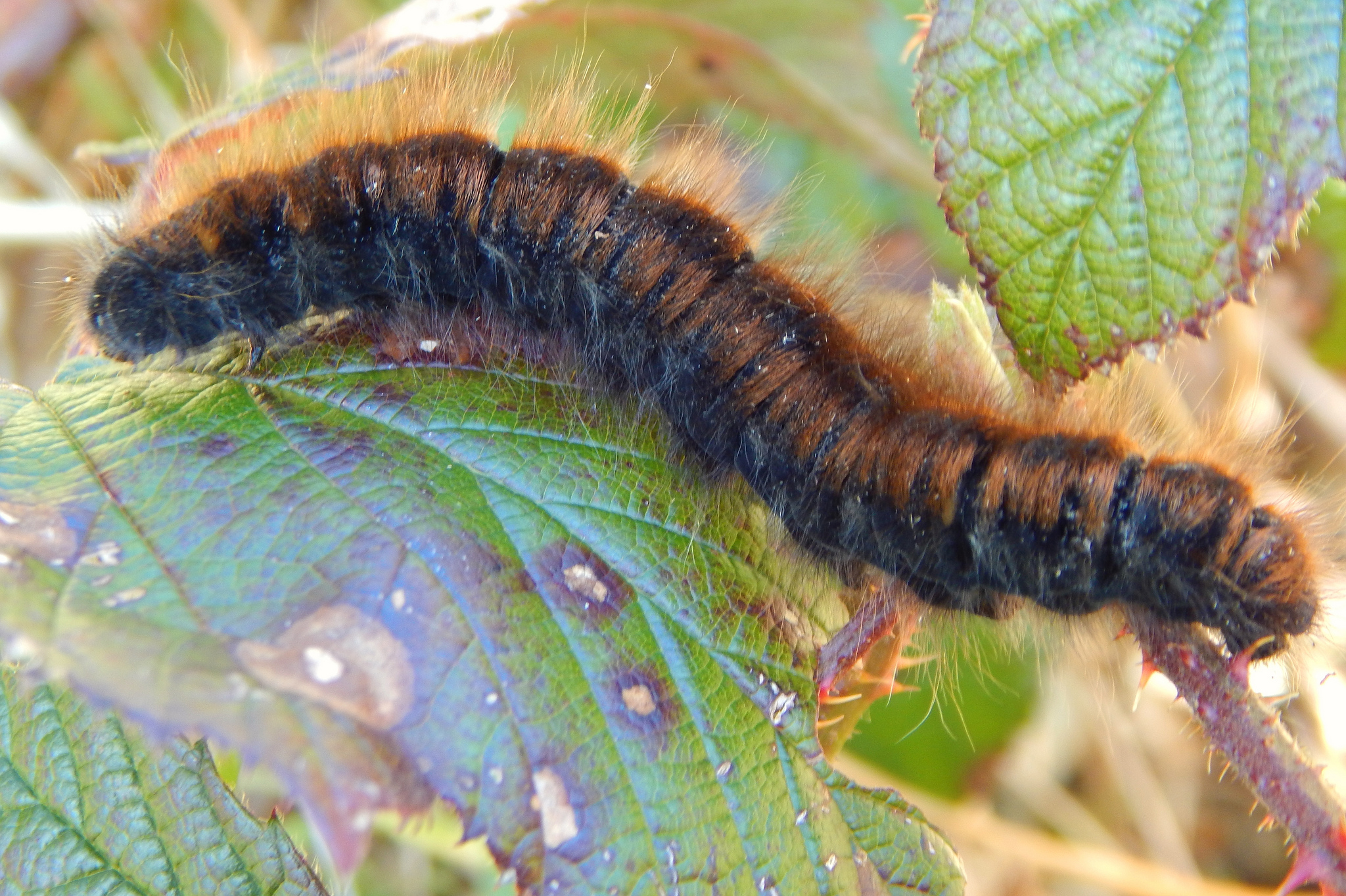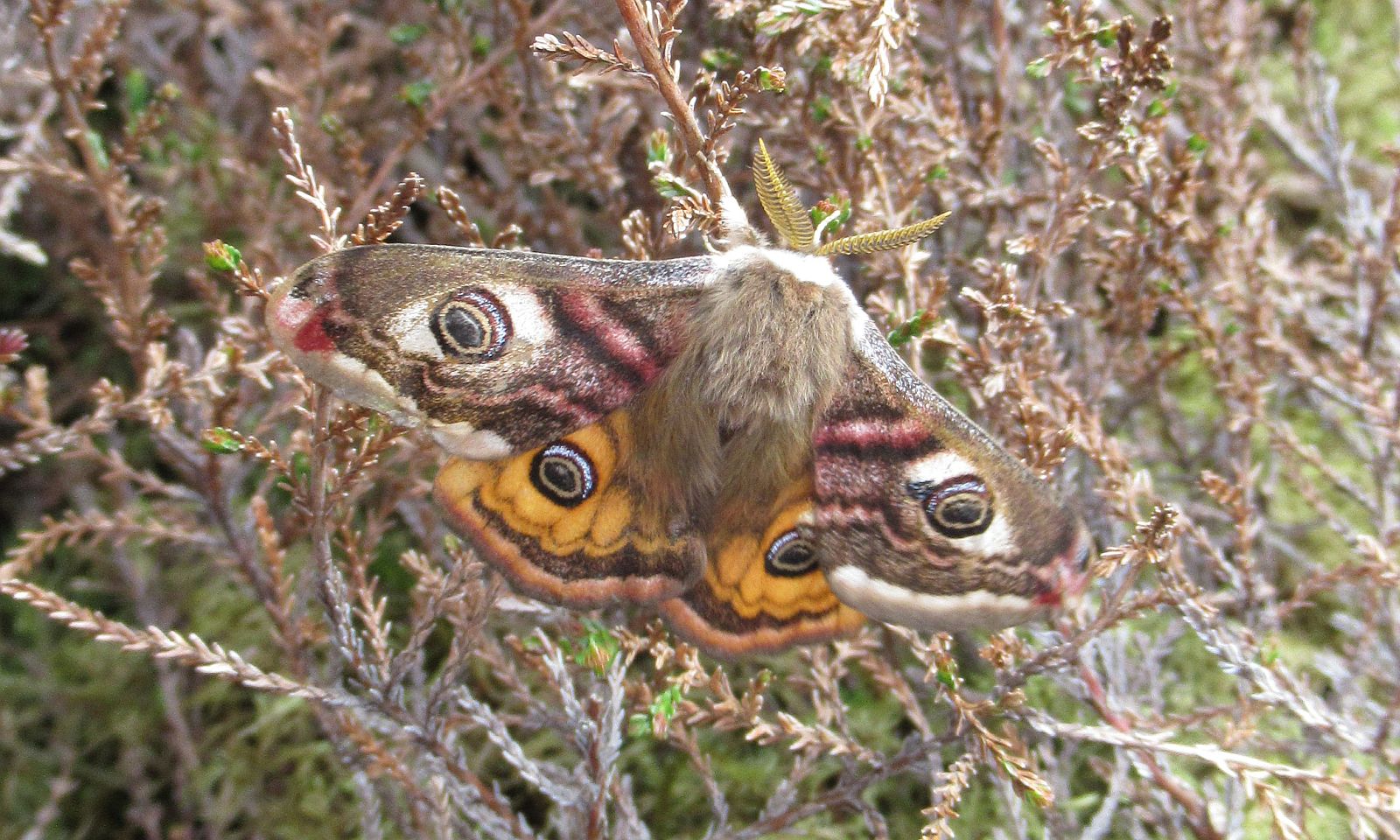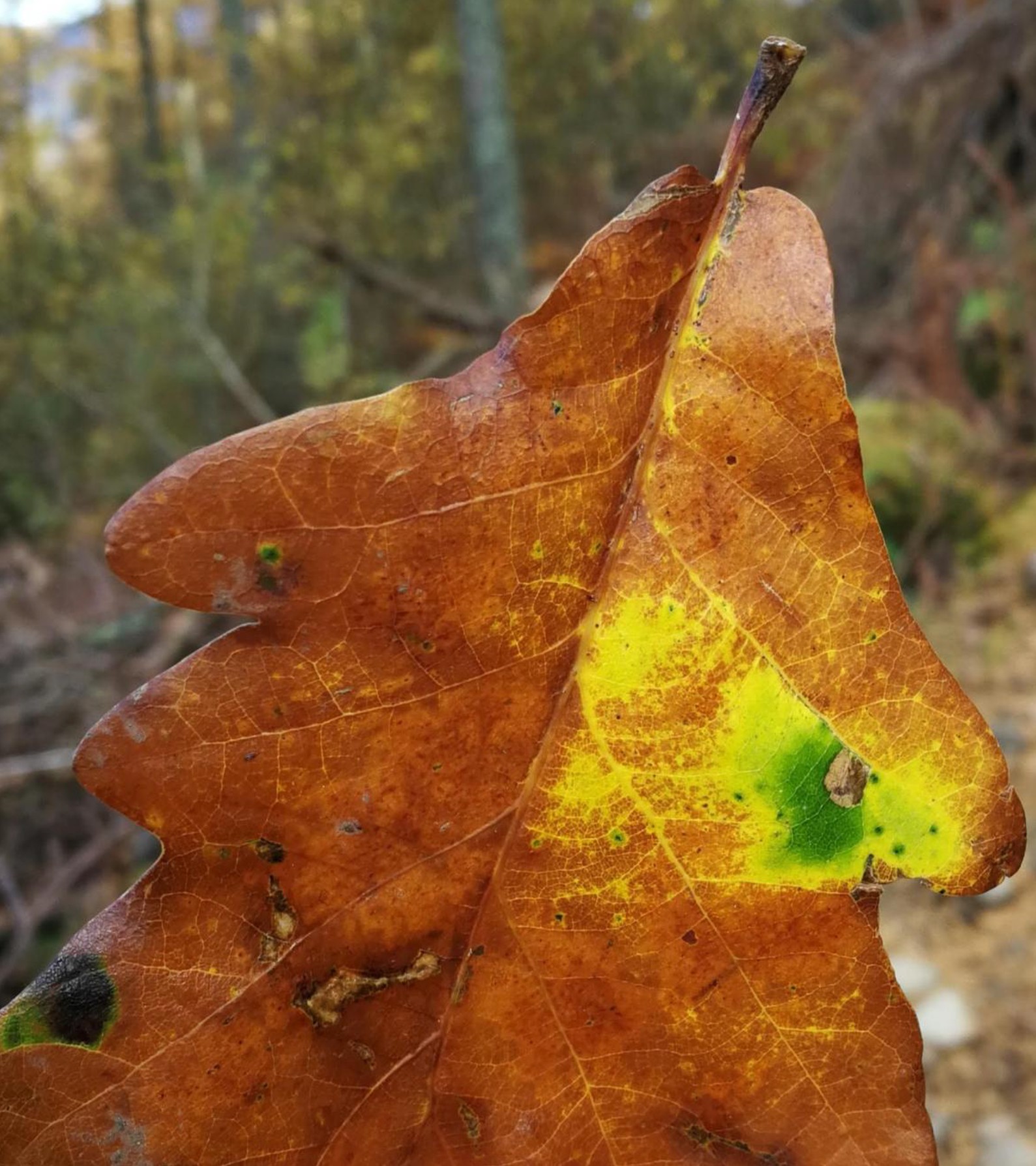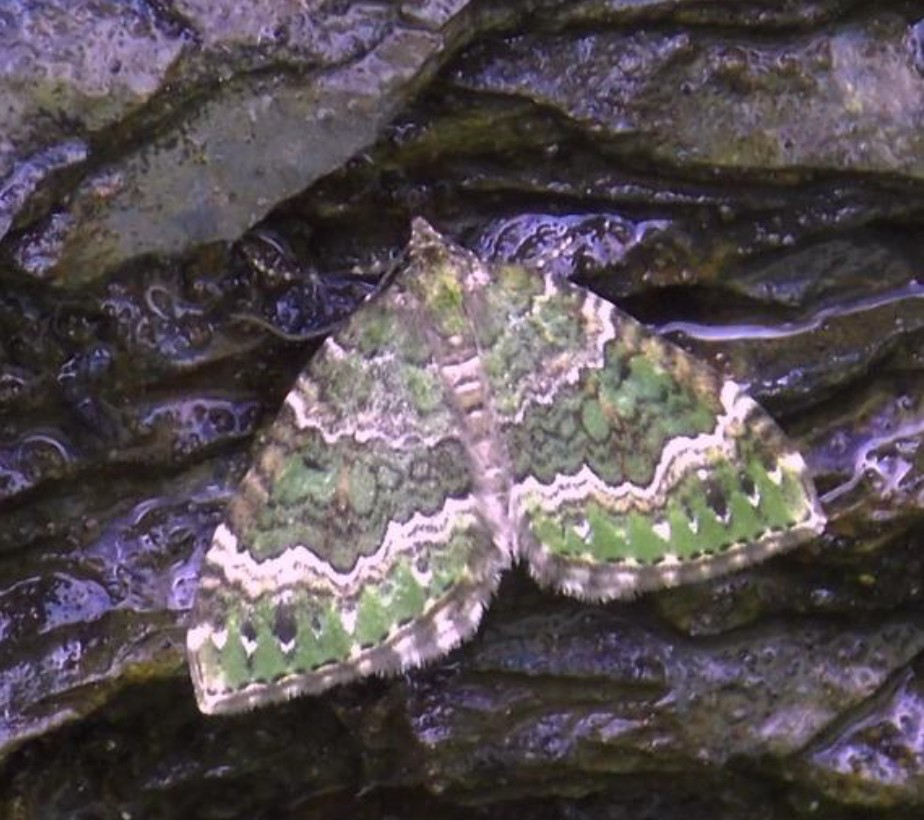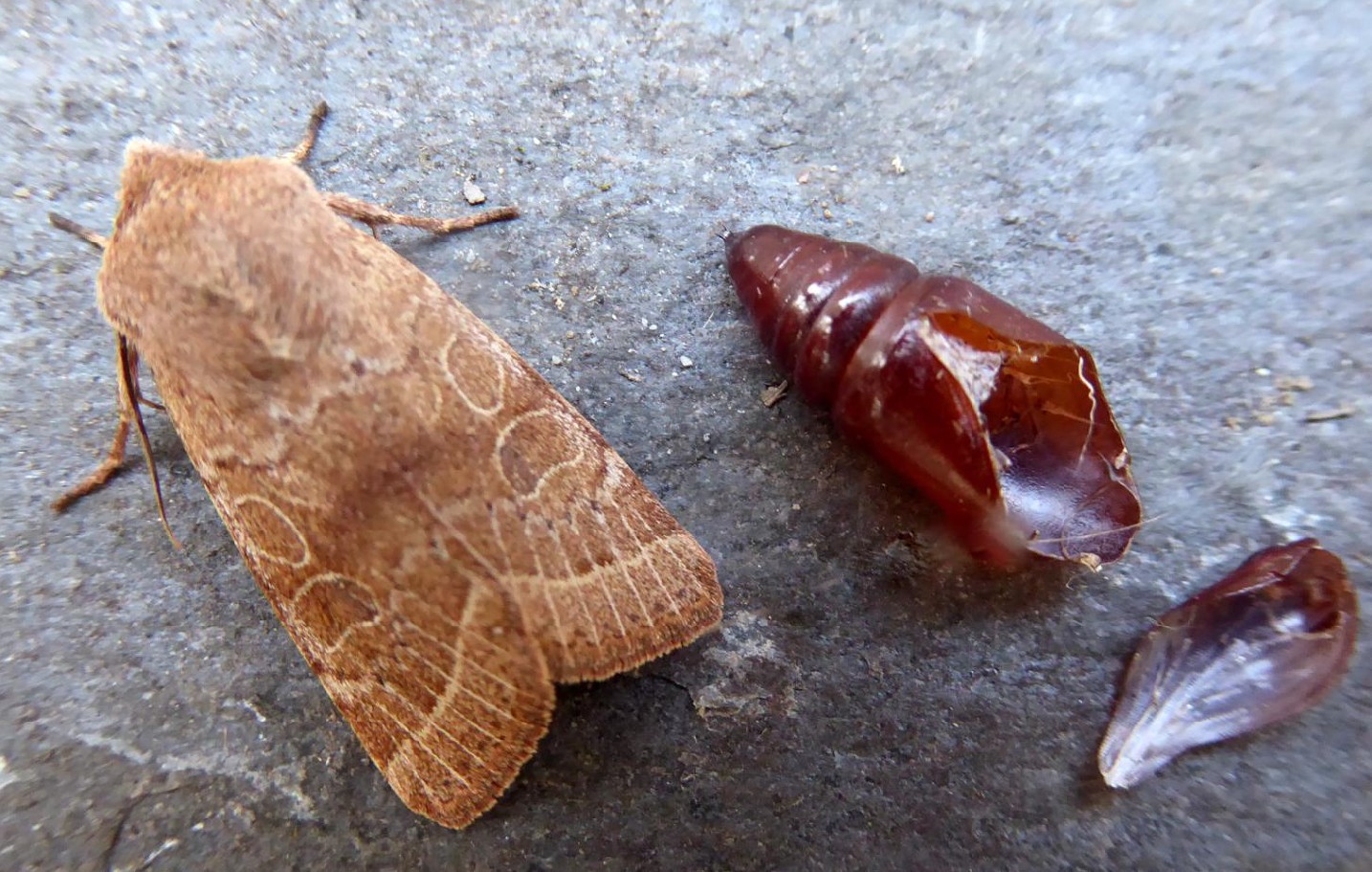The Emperor Moth is an exceptional insect. It is the only member of the emperor moth family found in the UK and certainly one of the larger (wingspan up to 80mm), most colourful and spectacularly marked species. The male is similar in markings (to the female shown above), with the four eyespots on the wings (two on the hind-wings) but it is smaller and has orangey hind wings and very pronounced feathery antennae. These antennae are key to the way this moth reproduces as the males, flying by day, seek out newly emerged females by tracking down the scent (or pheromone) that they secrete. Many, if not all, moths behave in this way but the Emperor demonstrates it on a big scale with a characteristic and spectacular ‘zigzagging’ flight, being attracted from kilometres away from its potential mate. As this flight happens in broad daylight this large moth can easily be seen rapidly chasing down the female’s odour as it skims low over the vegetation.
Recently advances in chemistry have made it practical to synthesise the specific pheromone concerned and it is readily available to buy at about £10. Simply exposing the impregnated lure to the air virtually ensures that males will materialise in almost any rural habitat!
This is a relatively common species and there are 234 records in the D&G database (to 2017). Of these, only 6 have been recorded as a result of pheromone lures but no doubt this number will increase as more people discover the technique.
The records cover a time-span from 1860 to today (literally!) with every year since 2000 (except 2003) with some records. Dumfriesshire has 21%, Wigtownshire 23% and Kirkcudbrightshire 53% of the records although the recording effort in each has not necessarily been equal. Generally it is a moth of the hills and heather moors but it is found just about anywhere including my back garden. The females fly by night to lay their eggs in small batches on heather but also on sallow, hawthorn, blackthorn, hazel and bramble. As a result the females are the sex that often comes to light traps.
The hatching caterpillars are black with rings of short spines. As they grow they become greener and end up fully grown as spectacular fat, green caterpillars with a ring of black spiny ‘warts’ round each segment of the body. Each wart normally has a yellow centre (there is a range of colour variations in this species) which makes this caterpillar very distinctive and easy to identify. After about six weeks feeding, the caterpillars spin a brown, papery, silk cocoon attached to a plant and pupate inside it to overwinter.
Given the large size of this moth, the male’s day-flying habit, the male’s attraction to the female pheromone, the female’s attraction to light, the large very distinctively coloured caterpillar and the large, exposed and distinct cocoon it is reasonable to expect that it would be a well recorded species. Of the 58% of the records which are of adults only 22% have the sex noted. However, 70% of these are females mostly caught in a light trap. Of the other records, 28% are of larvae and another 7% pupae (for the rest no particular stage was noted). This probably makes the Emperor unusual in having such a number of records of the different stages. It also makes it possible to record this moth throughout the year!
Now is the time to see this moth at its best – flying over the heather. But also keep on light trapping and perhaps try out the chemical lure. Even if you miss the season try to spot the caterpillars later on or even search the heather stems in mid-winter for the pupae!
I’m sure there will be a lot more Emperor Moth records pouring in.

